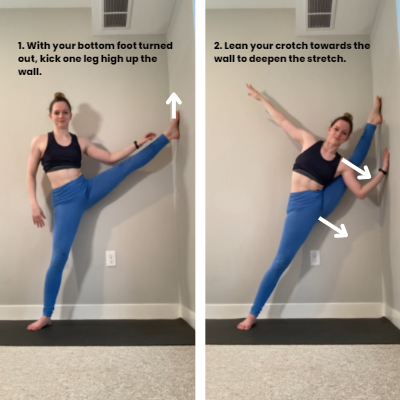Scoring gymnastics in women’s events can seem complex. Judges follow strict guidelines to award points.
Understanding how to score women’s gymnastics helps fans and aspiring gymnasts. This knowledge makes watching competitions more enjoyable and informative. Judges assess each routine based on difficulty, execution, and artistry. They start with a base score and deduct points for mistakes.
Different events like vault, bars, beam, and floor have specific scoring rules. Knowing these can clarify why certain scores are given. By grasping the basics, you can better appreciate the skill and precision in each performance. Let’s dive into how women’s gymnastics is scored, so you can follow along like a pro.

Credit: www.bostonglobe.com
Introduction To Women’s Gymnastics Scoring
Understanding the scoring in women’s gymnastics is crucial for appreciating the sport. It ensures fair competition and recognizes the athletes’ hard work and skill. This guide will provide an overview of how scoring works and why it is important.
Importance Of Accurate Scoring
Accurate scoring is vital in women’s gymnastics as it ensures fairness. It determines the winners and helps improve the sport by providing feedback to athletes. Scoring also motivates gymnasts to strive for perfection.
Errors in scoring can lead to unfair advantages or disadvantages. This affects not only the competition but also the gymnasts’ morale. Therefore, judges must follow strict guidelines to maintain accuracy.
Overview Of Scoring Systems
The scoring system in women’s gymnastics has evolved over the years. The current system, used by the International Gymnastics Federation (FIG), is known as the Code of Points.
This system evaluates two main components:
- Difficulty Score (D-score): Measures the complexity and risk of the routine.
- Execution Score (E-score): Assesses the quality of performance, including technique and artistry.
Each routine starts with a base score. Deductions are made for errors such as falls, steps, or poor form. The final score is the sum of the D-score and E-score, minus any deductions.
Here’s a simple breakdown:
| Component | Description |
|---|---|
| Difficulty Score (D-score) | Evaluates the complexity and risk of the routine. |
| Execution Score (E-score) | Assesses performance quality, including technique and artistry. |
| Deductions | Subtracted for errors like falls and poor form. |
| Final Score | Sum of D-score and E-score, minus deductions. |
Judges use a detailed rubric to ensure fairness. This rubric outlines the criteria for scoring each element of a routine.
Understanding these basics helps fans appreciate the skill and precision required in women’s gymnastics. It also highlights the importance of accuracy and fairness in scoring.
Understanding The Code Of Points
Understanding the Code of Points is crucial for anyone interested in gymnastics. This system determines how gymnasts’ performances are scored during competitions. It ensures fairness and consistency in judging. Knowing the Code of Points helps fans appreciate the skill level of the athletes.
History And Evolution
The Code of Points has a rich history. It was first introduced in the mid-20th century. Over the years, the system has evolved. Early versions were simple, focusing on basic elements. With each Olympic cycle, the Code has become more detailed. This evolution reflects the growing complexity of gymnastics. It now includes specific guidelines for difficulty, execution, and artistry. Changes are made to keep the sport challenging and fair.
Current Guidelines
The current Code of Points is detailed and precise. It includes rules for scoring routines in different apparatus. Difficulty scores are based on the elements performed. Each element has a value, contributing to the total score. Execution scores assess how well the elements are performed. Judges deduct points for mistakes like falls or wobbles. Artistry scores evaluate the overall presentation and choreography. The combination of these scores gives the final score for a routine.
Understanding these guidelines helps viewers recognize the nuances of each performance. It also highlights the incredible skill and dedication of the gymnasts. The Code of Points ensures that every routine is judged fairly and consistently.
Components Of A Gymnastics Score
Scoring in women’s gymnastics can seem complicated at first. It consists of two main components: Difficulty Score and Execution Score. These two parts come together to form a gymnast’s final score. Let’s dive into each component.
Difficulty Score
The Difficulty Score is all about the complexity of the routines. Judges look at the skills performed and assign a value. Higher difficulty means more points. Each skill has a specific point value. Gymnasts aim to include high-value skills to boost their scores. Combinations of skills can also increase the Difficulty Score. The goal is to perform tough routines flawlessly.
Execution Score
The Execution Score focuses on how well the skills are performed. Judges look for precision, grace, and technique. Points are deducted for errors. Small mistakes lead to minor deductions. Bigger errors result in larger deductions. Consistency and control are key here. Gymnasts must execute their routines smoothly. Clean performances mean fewer deductions and higher scores.

Credit: www.comingsoon.net
Difficulty Score Breakdown
In gymnastics, the difficulty score is a key part of the final score. It represents the complexity and risk of the routine. This score is made up of two main components: element values and connection bonuses. Understanding these can help you appreciate the athlete’s performance more.
Element Values
Each skill or move in a routine has a designated value. These values range from A to H, with A being the easiest and H being the hardest. Judges assign points based on the value of each element. For example, an A element might be worth 0.1 points, while an H element could be worth 0.8 points. The sum of these points forms the base of the difficulty score.
Connection Bonuses
Gymnasts can earn extra points by connecting skills. This means performing skills back-to-back without pauses. The more difficult the connection, the higher the bonus. For example, linking two D elements might earn an additional 0.2 points. These bonuses encourage gymnasts to perform complex and flowing routines.
Execution Score Details
The execution score in women’s gymnastics is crucial for evaluating a gymnast’s performance. It reflects how well the routine is performed, focusing on precision, form, and technique. Judges start with a perfect score of 10.0 and deduct points for errors. Understanding common deductions and their impact can help in grasping how execution scores are determined.
Common Deductions
Judges often deduct points for various mistakes during routines. Small errors like wobbles or steps on landings typically cost 0.1 to 0.3 points. Larger mistakes, such as falls, can result in deductions of 0.5 points or more. These deductions reflect the gymnast’s control and stability during their performance.
Form And Technique
Form and technique are vital for high execution scores. Judges look for straight legs, pointed toes, and clean lines. Bent knees or flexed feet can lead to deductions. Proper technique in executing skills also matters. A poorly executed skill can significantly reduce the execution score. Consistency in form and technique across the routine ensures fewer deductions.
Judging Different Apparatus
Gymnastics for women involves multiple apparatuses, each with unique scoring criteria. Judges assess each routine based on difficulty, execution, and artistry. Understanding how each apparatus is judged helps fans and athletes appreciate the sport more deeply.
Vault
The vault is a quick and explosive event. Gymnasts run down a runway, spring off a vault table, and perform acrobatics in the air.
- Difficulty Score (D-Score): This score is based on the vault’s difficulty. More complex moves earn higher points.
- Execution Score (E-Score): Judges look for form, height, distance, and landing. Deductions occur for steps, falls, or lack of control.
Each gymnast performs two vaults, and the scores are averaged.
Uneven Bars
The uneven bars require gymnasts to perform swings, releases, and catches. This apparatus showcases strength and agility.
- Difficulty Score (D-Score): Points are awarded for difficult skills and connections between moves.
- Execution Score (E-Score): Judges deduct for bent arms, legs, and missed handstands. Transitions between bars should be smooth.
High-flying releases and clean landings impress the judges the most.
Balance Beam
The balance beam tests a gymnast’s balance and precision. Routines include acrobatic and dance elements.
- Difficulty Score (D-Score): The score depends on the complexity of the elements performed.
- Execution Score (E-Score): Deductions are made for wobbles, falls, and form errors. Judges value grace and fluidity.
Beam routines must be under 90 seconds.
Floor Exercise
The floor exercise combines tumbling, dance, and choreography. Gymnasts perform to music, showcasing their creativity and athleticism.
- Difficulty Score (D-Score): Points are given for complex tumbling passes and dance elements.
- Execution Score (E-Score): Judges deduct for stumbles, lack of synchronization with the music, and form breaks.
Routines should not exceed 90 seconds and must cover the entire floor area.
Common Mistakes In Scoring
Common mistakes in scoring gymnastics women’s routines can affect the final results. Judges must be aware of these errors to ensure fair judging. This section highlights some common mistakes and provides insights for accurate scoring.
Overlooking Small Errors
Overlooking small errors is a frequent mistake in scoring gymnastics. Small errors include bent knees, flexed feet, or minor balance checks. These errors may seem insignificant but can impact the overall score. Judges should carefully watch each movement to catch these small mistakes.
To avoid overlooking small errors, judges need focused attention. Staying alert during routines helps in catching every detail. Training and experience also play a crucial role in identifying these errors. Regular practice and thorough knowledge of the code of points improve accuracy in scoring.
Bias And Subjectivity
Bias and subjectivity can affect the scoring process. Personal preferences or favoritism may lead to unfair scores. Judges must remain neutral and objective to ensure fairness. They should evaluate performances based on the code of points, not personal opinions.
To minimize bias and subjectivity, judges should undergo regular training. This training helps in understanding and applying the code of points correctly. Peer reviews and feedback sessions can also help in maintaining objectivity. Consistency in scoring practices ensures fairness and accuracy.
Tips For Aspiring Judges
For those passionate about gymnastics, becoming a judge can be rewarding. It requires dedication, a keen eye, and an understanding of the sport’s complexities. Here are some tips for aspiring judges to help you on this journey.
Training And Certification
Begin with basic training courses. These courses cover fundamental rules and scoring guidelines. Enroll in programs offered by recognized gymnastics associations. These programs ensure you learn from professionals.
After initial training, pursue certification. Certification involves passing exams to prove your knowledge. Certified judges often find more opportunities. Regularly update your certification as rules can change.
Staying Updated
Stay informed about changes in gymnastics rules. Follow updates from official gymnastics bodies. They release new guidelines and scoring criteria regularly. Attend workshops and seminars to stay current.
Join online forums and communities for judges. These platforms offer valuable insights and discussions. Networking with other judges can enhance your understanding and skills.
Resources For Further Learning
Understanding how to score gymnastics can be challenging. For those looking to deepen their knowledge, several resources can help. From books to hands-on workshops, these resources provide valuable insights into the scoring process.
Books And Manuals
Books and manuals are essential for understanding gymnastics scoring. They offer detailed rules, examples, and scoring guidelines. Here are some recommended resources:
- Code of Points: This is the official rule book for gymnastics scoring. It includes detailed descriptions of routines and scoring criteria.
- Gymnastics Rules and Scoring by Christina Kunz: This book breaks down the scoring system for beginners and provides practical examples.
- Understanding Gymnastics: Scoring and Judging by David Alsop: This manual offers insights into the judging process and common scoring mistakes.
Workshops And Seminars
Workshops and seminars offer hands-on learning experiences. They provide opportunities to interact with experts and gain practical knowledge.
Here are some opportunities you might consider:
- USAG Judging Clinics: These clinics provide in-depth training on the scoring system and judging criteria.
- Regional Seminars: Many regions offer seminars that cover the latest changes in scoring rules and provide practical judging experience.
- Online Webinars: These are great for those who prefer learning from home. Webinars often feature live demonstrations and Q&A sessions with experts.
By utilizing these resources, you can gain a better understanding of how to score gymnastics. Whether through books or hands-on workshops, these tools can help you become more knowledgeable and confident in scoring.

Credit: www.reddit.com
Frequently Asked Questions
How Is Women’s Gymnastics Scored?
Women’s gymnastics is scored based on difficulty and execution. Judges evaluate the complexity of the skills and the precision of their execution. Deductions are made for errors, form breaks, and falls.
What Are The Scoring Criteria?
The scoring criteria include difficulty, execution, artistry, and composition. Each routine starts with a base score, and deductions are made for mistakes and imperfections.
How Do Deductions Work In Gymnastics?
Deductions are taken for errors like falls, wobbles, and form breaks. These deductions reduce the gymnast’s final score.
What Is The Maximum Score In Gymnastics?
The maximum score in women’s gymnastics is 10. 0 for execution, combined with the difficulty score, there is no upper limit.
Conclusion
Scoring gymnastics for women might seem complex, but it’s manageable. Focus on understanding the rules and key elements. Practice recognizing routines and their difficulty levels. With time, scoring becomes clearer. Use the official guidelines as a reference. Stay patient. Keep learning.
You’ll improve your skills gradually. Enjoy watching and scoring gymnastics more as you gain knowledge. It’s a rewarding experience.



